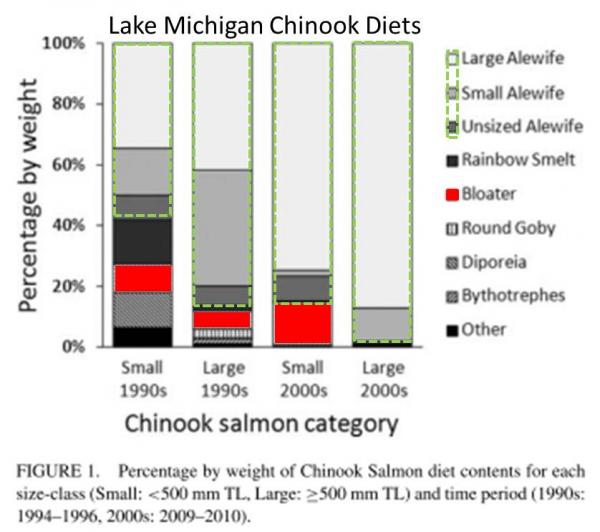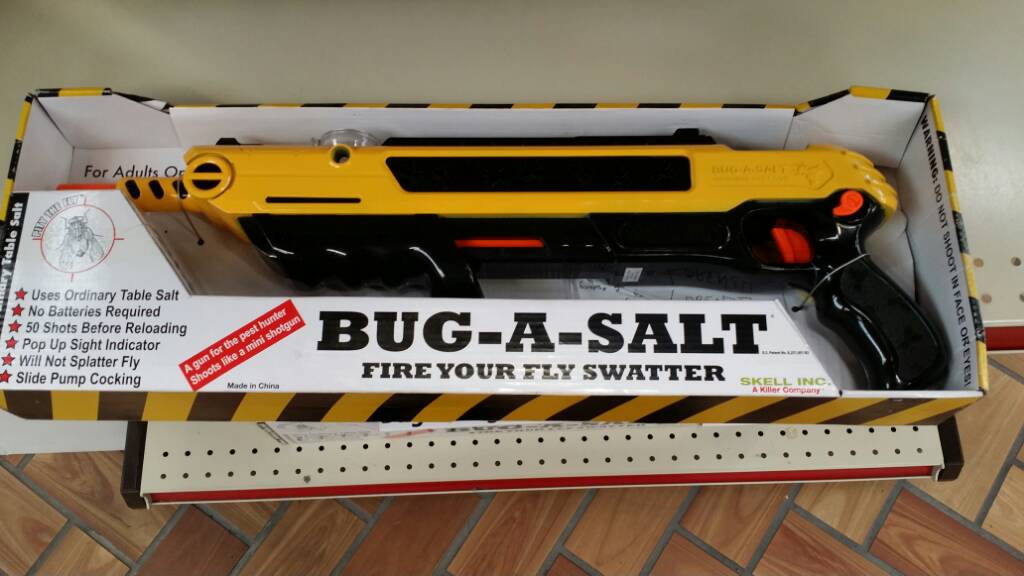-
Posts
11 -
Joined
-
Last visited
About TheMarlinSeat
- Birthday 09/21/1960
Contact Methods
- Website URL
Profile Information
-
Gender
Male
-
Location
Toronto, Ontario
-
Home Port
Bluffers Park
-
Boat Name
The Marlin Seat
TheMarlinSeat's Achievements
0
Reputation
-
Hi, It's Glenn Anderson from the MEA. Sorry about the phone mailbox situation at that number on the tag. I tagged that Salmon on July 23 this year off the Scarborough Bluffs. Can you provide me with some details as to where you caught the fish? Unfortunately, this tagging is done for research and no prizes are given out. Sorry! Thanks for reporting the tag though. Glenn
-
Genetics and naturalization are one part of what make the fish size limited, although I am sure there a ton of other factors. Back in the 60's and 70's the strains used on the Canadian side were descendants of the Tule River or Puget Sound strain. Over the years natural selection has bred out the Tule strain and the lineage of most salmon in Lake Ontario comes from Puget Sound seed stock. This strain is not normally much bigger than 30-40 LBS on average. The fall run Puget Sound strain strain we have also matures typically after 3 winters "at sea" or in the lake....I think Vince's points about pen vs. upstream fry source are completely valid and perhaps some of these up stream fry are living longer before maturing. Last Sunday I caught a 8 LB female Chinook that I kept to eat. It was full of small skein eggs and it looked like a 2 year old fish to me. I did wild source Chinook egg collection in Ontario at the Credit River for the Ringwood Fish Culture station for 6 years between 2006 and 12 and was part of the team that ran the program at Ringwood. We always selected males and females for large size. An interesting fact about this however, the larger (and possibly older) males and females produce poorer quality eggs and sperm, probably not unlike us humans. We had some University student arrive one year with a nifty expensive microscope that filled a minivan. They confirmed that the best quality sperm came from small young males, and the best of the best came from those pesky 1 LB jacks. This might be something that explains the drift in size over time as more and more of the smaller, high quality males contributing to egg fertilization successfully produce smaller adults of their own. In my opinion the introduction of a new strain like the BC Campbell River or the Kenai River strain that often lives 5 years or more and regularly produces 50-70 LB fish would be awesome. However, there are issues with this in that this strain and many other BC and Alaska races are spring spawners (aka Spring salmon) and this would probably generate much competition and chaos with the existing Chinook base and food web. We need to be careful that introducing new strains doesn't wreck what we already have. Anyway...just some of my thoughts. Interesting thread.... Glenn
-
I find that an east wind that is generated from a cold front coming in behind a warm front that's been around a few days generally shuts fishing down. However, sometimes high pressure systems carry an east wind, today is a good example on the north shore and I've had some good days on the water with this kind of easterly. I think barometric changes have more impact on fish behavior than wind direction....it's just that the barometer always falls quick when a cold front arrives and that usually pulls an east wind with it. Glenn
-
Impressive, as the crow flies that's a 110 mile swim. I'd guess he hung around spawning in the Rouge until at least late April, then bashed his head on a bunch on rocks exiting the river before swimming over to your lure. I would probably guess he traveled close to 200 miles to get to you, in about 4 weeks. Just for interest sake, Let's rough out that travel period to May 1 to June 1, for 1 month of total travel. 1 month is 720 hours. 200 miles in 720 hours is about a quarter of an mile per hour. So that fish sustained an average speed of .25 MPH for 4 weeks after spending 4-6 weeks running upstream in a fast, cold river...then fighting a pile of larger males for a couple of weeks and spawning with as many females as he could find. When I think about it that way, I gotta respect that fish! If anyone else comes across a tagged fish, good information to collect in addition to the tag number is length, weight and location of capture. Zern, no need to return the tag, info was great. Thanks! Glenn
-
The MEA used red tags 3 years ago and switched to the orange ones for the last 2 spring lifts. Assuming the fish was tagged in its first run at 2 years old that would put it around it around 5 years old. Another interesting tidbit about the tags, most of the returning tagged fish we see have algae growing on one side of the tag, I usually have to scrape it off to read the tag numbers. Since algae needs sunlight to grow, I'm assuming that these bows are spending a lot of time quite shallow in the water column. Glenn Sent from my iPad using Tapatalk
-
LOL....almost seems that way sometimes! The MEA stocks thousands of yearling rainbows into the Rouge River watershed each year. We tag the returning adults at the fish ladder for few of reasons: 1. Each spring the ladder is opened and fish manually lifted past a 12 foot dam that impedes their upstream migration. Untagged fish get a fancy new tag and any returning fish with tags are re-assessed for body condition, weight and length. This data is compiled year over year and helps determine growth rates and the returning population size, which is helpful in determining quality of the forage base in Lake Ontario. 2. Fish that are tagged and recaptured in other north shore tribs in subsequent years helps us assess straying rates for returning adult rainbows. 3. Fish that are recaptured out on the lake and get reported by folks such as yourselves help us determine range and distribution of rainbows using north shore tribs for spawning. 4. Untagged returning adults each year may represent a portion of the recruitment from the Rouge watershed and is a potential measure of our stocking efforts and natural reproduction. We typically get a low percentage of returning tagged adults with some straying of tagged fish to other tribs and we get many of our offshore tag return calls from the US side of the lake. Thanks for reporting any MEA tags that you may come across. Please feel free to post them here and I will do my best to provide details for those interested. Glenn Sent from my SM-N900W8 using Tapatalk
-
The data from our tagging records shows that this rainbow was 2.65lbs, 19.5 inches in length and was tagged at the fish ladder on April 12, 2014. The tagging location is at: 43.868137, -79.261885 If you want to see where that is, cut and paste that lat/Lon into Google maps, then switch to satellite view. Zern, if you can give me a little more detail about where it was caught I can complete the records for this fish. Thanks much! Glenn Anderson Metro East Anglers/Ringwood Fish Culture Station Sent from my iPad using Tapatalk
-
With my wire lines I make a loop in the end and pass this through the swivel eye and then the swivel through the loop to form a slip knot on the eye. Then tie a single overhand knot in the main together with the short tag, about a half inch above swivel eye. Indestructible, I tie it up this way in the spring and it's good for the season, assuming I don't get the prop between the rod tip and a fish. I also like to put a small bead on the wire before tying the swivel on, it keeps the knot from ramming into the top roller whenever it's reeled all the way in. Glenn Sent from my iPad using Tapatalk
-

Get Ready for......BITING FLY SEASON!
TheMarlinSeat replied to skipper19's topic in Open Lake Discussion
Skipper19, I have to reapply the catnip oil often....probably every hour or so. It comes in a little spray bottle so I just give my ankles a shot every once an a while. It works quite well for me...keeps me from having to do the Chinook stomp every time there's a fish on. Wish I could find something that keeps Midges from going up my nose all day.... Sent from my SM-N900W8 using Tapatalk -

Get Ready for......BITING FLY SEASON!
TheMarlinSeat replied to skipper19's topic in Open Lake Discussion
I get pretty good results with Catnip oil. I buy it at the local pet store for a couple of bucks. It doesn't smell bad or like chemicals so I like to think it's not messing with my program. Downside is my neighbours cat scratches the hell out of my legs when I get back to he dock. Glenn Sent from my iPad using Tapatalk -
Hi, Glenn Anderson here. Yes it's a Metro East Anglers tag. We operate a fish ladder on the Rouge River north east of Toronto and tag all rainbows lifted at the ladder. I will check my tagging records and let you know when this fish was tagged. They sure travel! Sent from my iPad using Tapatalk



